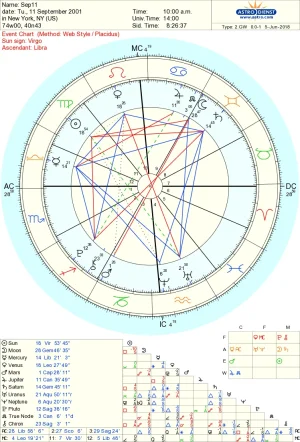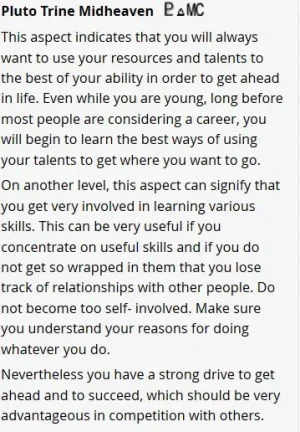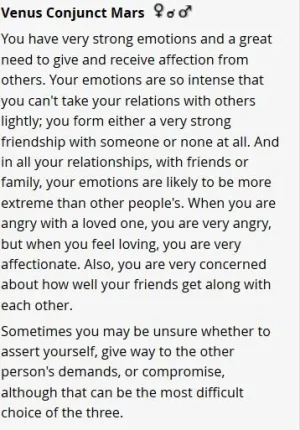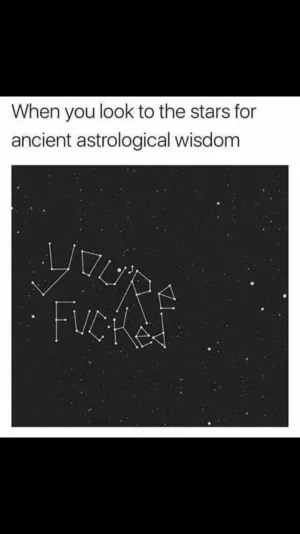jkxx
*hv
- MBTI
- INFJ
- Enneagram
- 1w2
(also I will be reviewing the extra charts posted, have not forgotten you, just continuing with the text)
Ch 2. - The digression, part 1
....because we don’t want to take ourselves too seriously with this

[Zodiaktopia]
Today we’ll be introducing astrology’s predictive uses beginning with my own experience at the time I was originally exposed to it. We’ll then look at some “big” transits of recent times and the effects they have had on our society, before moving onto the very heavy chapter on Saturn following this one.
The two techniques on today’s menu include transit and secondary progression analysis. Briefly:
* Transits are times when a transiting (real) planet forms an exact aspect (angle such as 60, 90, 120, 180, or 0 degrees) to one of our natal planets. Depending on the planets involved the transit may coincide with either happy or painful circumstances and may be experienced on the physical (more likely with Mars or Saturn), emotional (Moon, Neptune, Venus), or psychological (Pluto) levels. Transits can be thought of external factors lasering in on us and impacting us in some way.
* Progressions can also coincide with external events but those events would be brought on by our actions where the progression causes an internal shift in perspective or signals something new entering our conscious awareness.
Generally transits are thought to be somewhat more “action-oriented” where progressions are more about “internal development.”
Sample chart – first encounter with astrology & the series Cosmos
The chart is set up such that the outermost ring is the natal or birth chart, the middle green ring represents the secondary progressions and the inner ring (red) the transit or actual planets in the skies at the time.
Being an encounter with astrology it would make sense to find Uranus (ruler of astrology) and possibly Jupiter involved in the chart. Cosmos representing technological (Uranus again) and ecological (Chiron) themes should show both of these planets highlighted. This is our theory, let’s see how it pans out in practice.
I must admit to being very bored and disappointed with life prior to these transits hitting – yes I was doing just fine at school but everything we were learning save for math and science classes was rather uninspiring and so was life itself – so much so I would spend my free 1st period (early in the morning) just napping in the school library. After hearing about Cosmos this all changed and even more so when a friend told me to check out a web site called astro.com – the events happening within a fairly small time span that Autumn 2002.

Let’s begin by first looking at the transits valid during this time. Since the transit planets are in red and the natal chart in black we are looking for either conjunctions (planets in the same degree across the two) or planets making some sort of aspect indicated by a colored line connecting them. And we are looking for the important themes which means ignoring the personal planets and only looking at the transit planets Jupiter through Pluto and Chiron.
Using this rule set we can see that there are in fact a few transits active at this time:
Pluto conjunct Uranus (how fitting)
Chiron conjunct Neptune
Neptune conjunct progressed Mercury
Uranus square Saturn
Uranus square nodal axis
Jupiter trine Uranus
Chiron square progressed Venus and Mars
with brief interpretations of these transits
Pluto-Uranus would be read as an intensification (Pluto) of one’s desire for independence and original way of being (Uranus) and it is likely this intensification would lean toward the study of astrology, technology, or science as all these are represented by Uranus.
Chiron-Neptune would signal the end of innocence (Chiron) regarding one’s beliefs about how life ought to be (Neptune) and indeed the revelations during that year nearly wiped out much of what I had believed up to this point.
Neptune-Mercury is at first not relevant except it is a transit which has an effect of stimulating one’s intuition – it gives the ability to work with subtle patterns and accept/make sense of them even if one is normally a “pragmatist.”
Uranus in hard aspect to Saturn brings a kind of restlessness toward “how life just is”/”reality” with a strong desire to make life more exciting. This is because Uranus (innovation/”the awakener”) is challenging Saturn’s rigid patterns and narrow visions of “reality.”*
Jupiter in lazy aspect with Uranus would correlate with a sort of natural expansion (Jupiter trine) of one’s unconventional or generally Uranian tendencies.
And Chiron in hard aspect to Venus and Mars would be an influence which had a very negative impact on a condition which had already been causing me problems (avpd) and one which caused problems that would require a good 15 years to sort out.
Immediately we see that there are rather a bunch of transits involving Uranus, both in the natal chart and as a transit planet. Thus the time does check out as significant for an introduction to astrology.
* This will be discussed in much more detail in the following chapter.
While we are at it let’s also list the progressions evident in the chart – this would be the green planets making any aspects to the black ones. Using this technique we have
progressed Jupiter conjunct Sun – generally indicates long journeys and travel around the world (plenty during those years so indeed true) and events and circumstances which favor expansion and growth in a general sense
progressed Sun sextile Uranus – continues the Uranian/astrology/technology themes – technology was also a major interest even more than usual during these times
progressed Moon conjunct Vertex
progressed Midheaven conjunct Saturn – Saturn rules the Midheaven and the 10th house and when it falls on it this indicates a sort of opportunity to achieve something of significance, if one is willing to take responsibility. As it happens I wasn’t but such an opportunity was really offered through the circumstances of that year.
Interesting! Because the chapter began with calling out Uranus and Jupiter as the two astrology planets. Here they pop up by progression as well.
Here we can see very strong support for “astrology and technology” in this combination chart. In fact there are relatively few transits or progressions which don’t support this theme somehow.
Ch 2. - The digression, part 1
....because we don’t want to take ourselves too seriously with this

[Zodiaktopia]
Today we’ll be introducing astrology’s predictive uses beginning with my own experience at the time I was originally exposed to it. We’ll then look at some “big” transits of recent times and the effects they have had on our society, before moving onto the very heavy chapter on Saturn following this one.
The two techniques on today’s menu include transit and secondary progression analysis. Briefly:
* Transits are times when a transiting (real) planet forms an exact aspect (angle such as 60, 90, 120, 180, or 0 degrees) to one of our natal planets. Depending on the planets involved the transit may coincide with either happy or painful circumstances and may be experienced on the physical (more likely with Mars or Saturn), emotional (Moon, Neptune, Venus), or psychological (Pluto) levels. Transits can be thought of external factors lasering in on us and impacting us in some way.
* Progressions can also coincide with external events but those events would be brought on by our actions where the progression causes an internal shift in perspective or signals something new entering our conscious awareness.
Generally transits are thought to be somewhat more “action-oriented” where progressions are more about “internal development.”
Sample chart – first encounter with astrology & the series Cosmos
The chart is set up such that the outermost ring is the natal or birth chart, the middle green ring represents the secondary progressions and the inner ring (red) the transit or actual planets in the skies at the time.
Being an encounter with astrology it would make sense to find Uranus (ruler of astrology) and possibly Jupiter involved in the chart. Cosmos representing technological (Uranus again) and ecological (Chiron) themes should show both of these planets highlighted. This is our theory, let’s see how it pans out in practice.
I must admit to being very bored and disappointed with life prior to these transits hitting – yes I was doing just fine at school but everything we were learning save for math and science classes was rather uninspiring and so was life itself – so much so I would spend my free 1st period (early in the morning) just napping in the school library. After hearing about Cosmos this all changed and even more so when a friend told me to check out a web site called astro.com – the events happening within a fairly small time span that Autumn 2002.

Let’s begin by first looking at the transits valid during this time. Since the transit planets are in red and the natal chart in black we are looking for either conjunctions (planets in the same degree across the two) or planets making some sort of aspect indicated by a colored line connecting them. And we are looking for the important themes which means ignoring the personal planets and only looking at the transit planets Jupiter through Pluto and Chiron.
Using this rule set we can see that there are in fact a few transits active at this time:
Pluto conjunct Uranus (how fitting)
Chiron conjunct Neptune
Neptune conjunct progressed Mercury
Uranus square Saturn
Uranus square nodal axis
Jupiter trine Uranus
Chiron square progressed Venus and Mars
with brief interpretations of these transits
Pluto-Uranus would be read as an intensification (Pluto) of one’s desire for independence and original way of being (Uranus) and it is likely this intensification would lean toward the study of astrology, technology, or science as all these are represented by Uranus.
Chiron-Neptune would signal the end of innocence (Chiron) regarding one’s beliefs about how life ought to be (Neptune) and indeed the revelations during that year nearly wiped out much of what I had believed up to this point.
Neptune-Mercury is at first not relevant except it is a transit which has an effect of stimulating one’s intuition – it gives the ability to work with subtle patterns and accept/make sense of them even if one is normally a “pragmatist.”
Uranus in hard aspect to Saturn brings a kind of restlessness toward “how life just is”/”reality” with a strong desire to make life more exciting. This is because Uranus (innovation/”the awakener”) is challenging Saturn’s rigid patterns and narrow visions of “reality.”*
Jupiter in lazy aspect with Uranus would correlate with a sort of natural expansion (Jupiter trine) of one’s unconventional or generally Uranian tendencies.
And Chiron in hard aspect to Venus and Mars would be an influence which had a very negative impact on a condition which had already been causing me problems (avpd) and one which caused problems that would require a good 15 years to sort out.
Immediately we see that there are rather a bunch of transits involving Uranus, both in the natal chart and as a transit planet. Thus the time does check out as significant for an introduction to astrology.
* This will be discussed in much more detail in the following chapter.
While we are at it let’s also list the progressions evident in the chart – this would be the green planets making any aspects to the black ones. Using this technique we have
progressed Jupiter conjunct Sun – generally indicates long journeys and travel around the world (plenty during those years so indeed true) and events and circumstances which favor expansion and growth in a general sense
progressed Sun sextile Uranus – continues the Uranian/astrology/technology themes – technology was also a major interest even more than usual during these times
progressed Moon conjunct Vertex
progressed Midheaven conjunct Saturn – Saturn rules the Midheaven and the 10th house and when it falls on it this indicates a sort of opportunity to achieve something of significance, if one is willing to take responsibility. As it happens I wasn’t but such an opportunity was really offered through the circumstances of that year.
Interesting! Because the chapter began with calling out Uranus and Jupiter as the two astrology planets. Here they pop up by progression as well.
Here we can see very strong support for “astrology and technology” in this combination chart. In fact there are relatively few transits or progressions which don’t support this theme somehow.
















